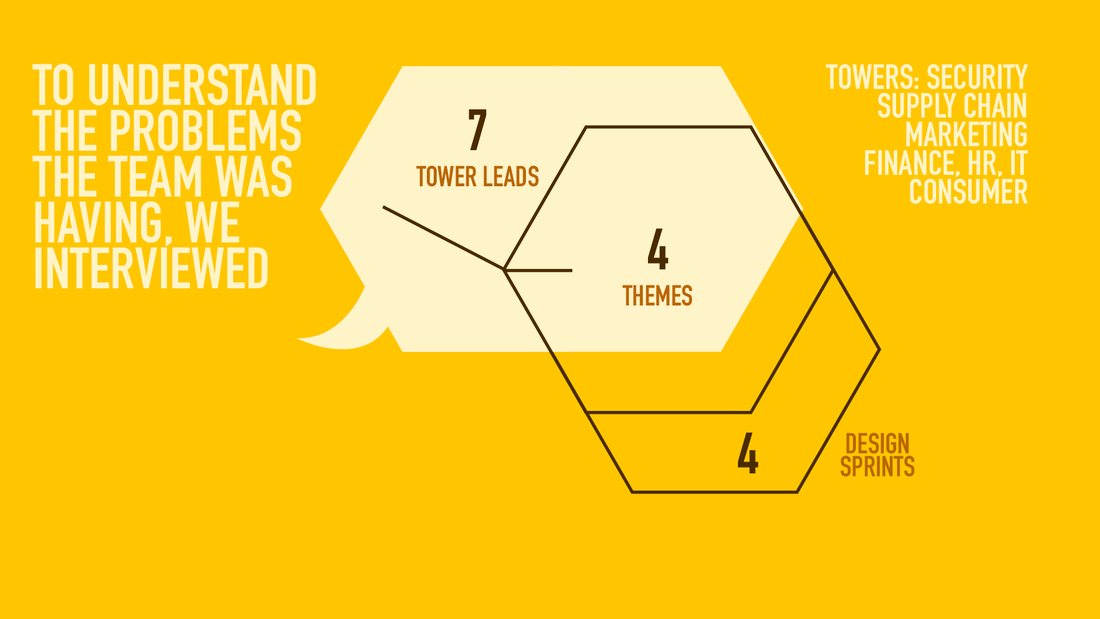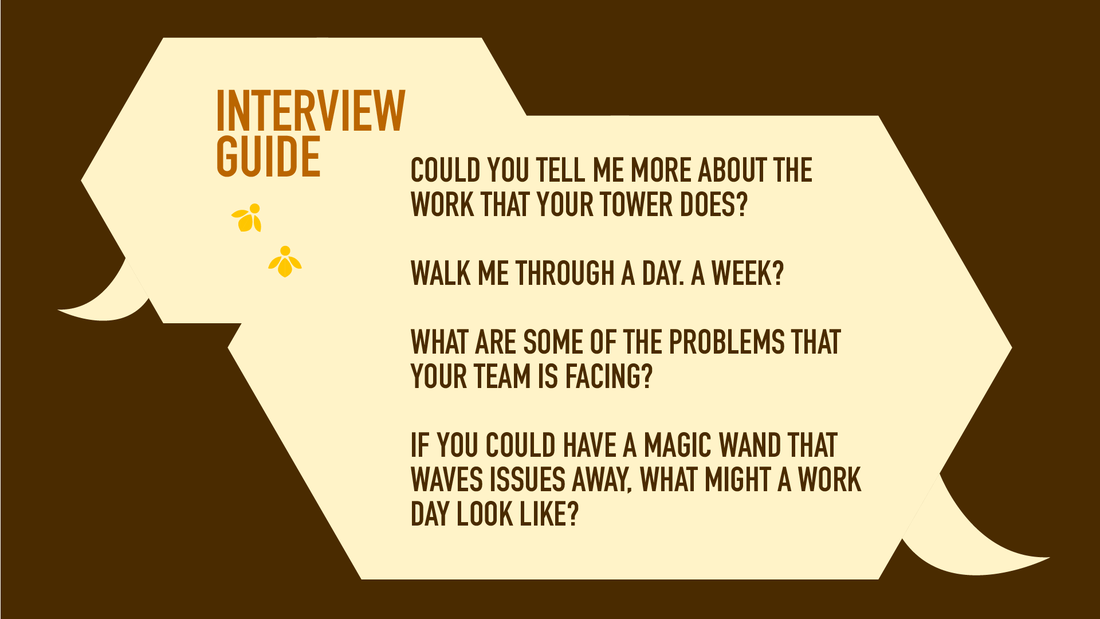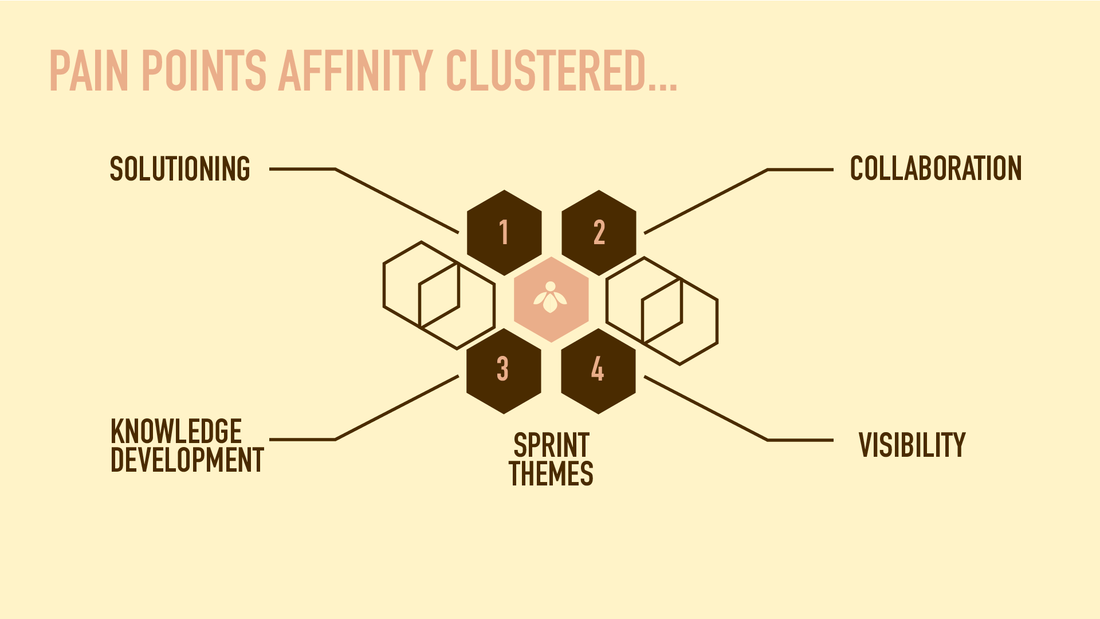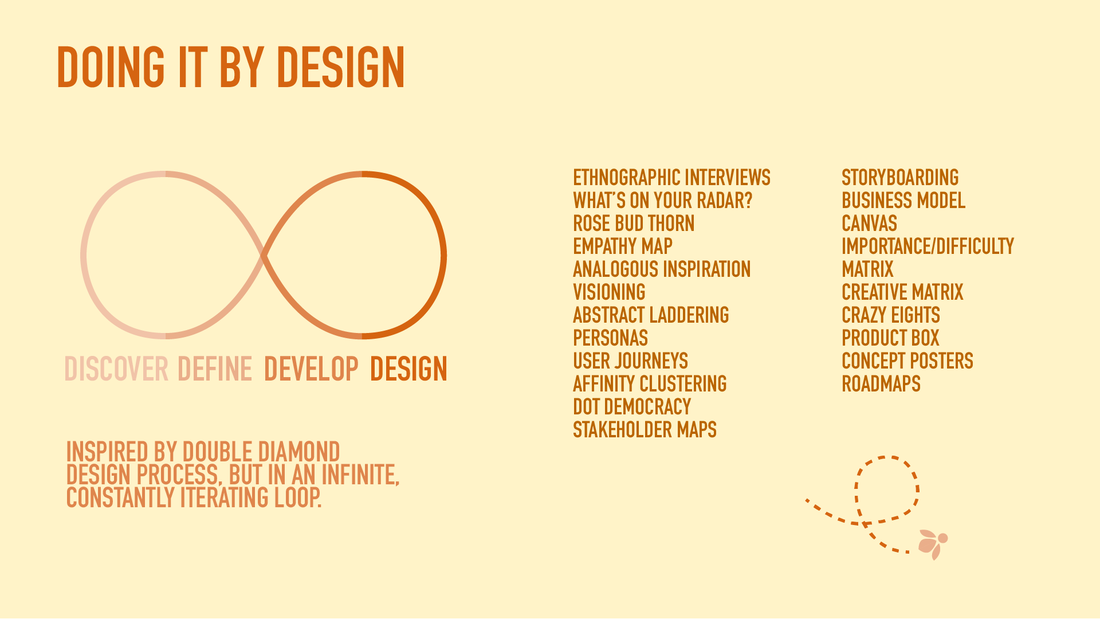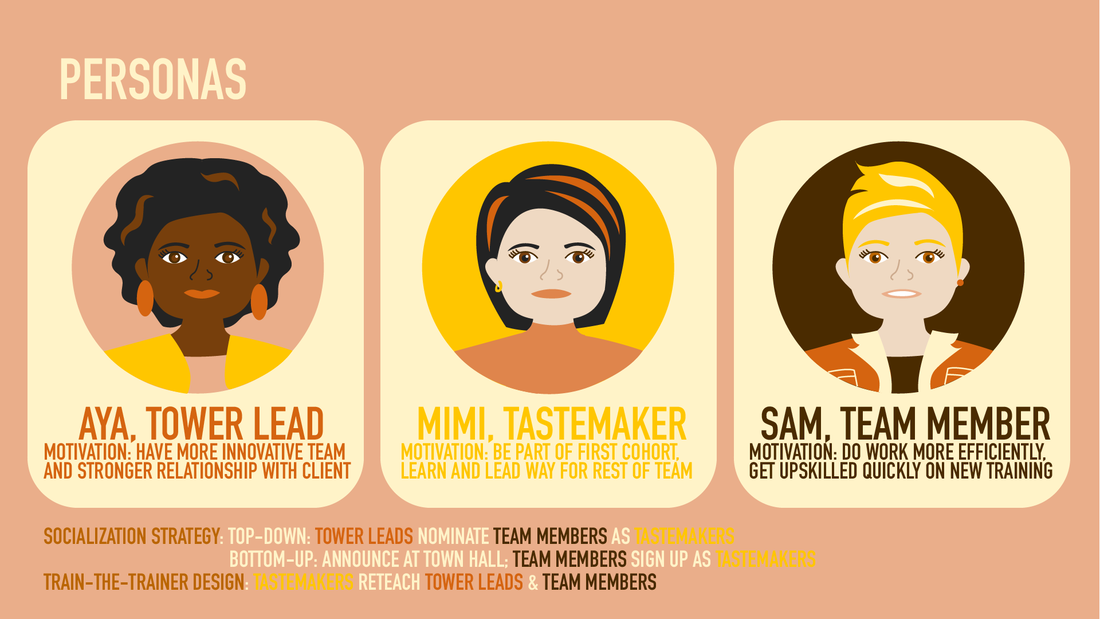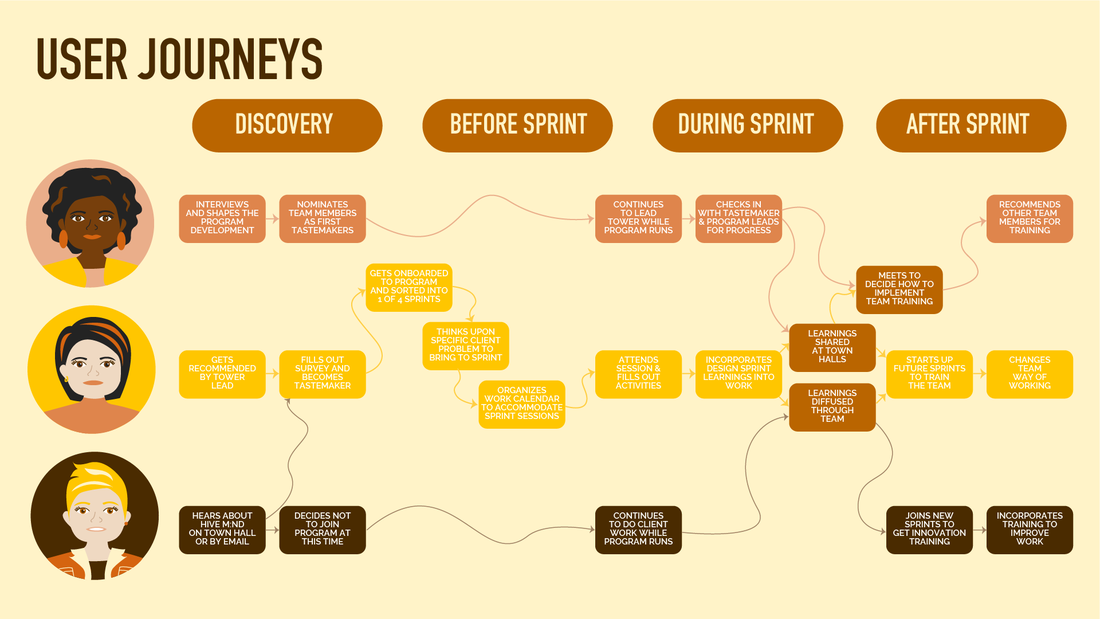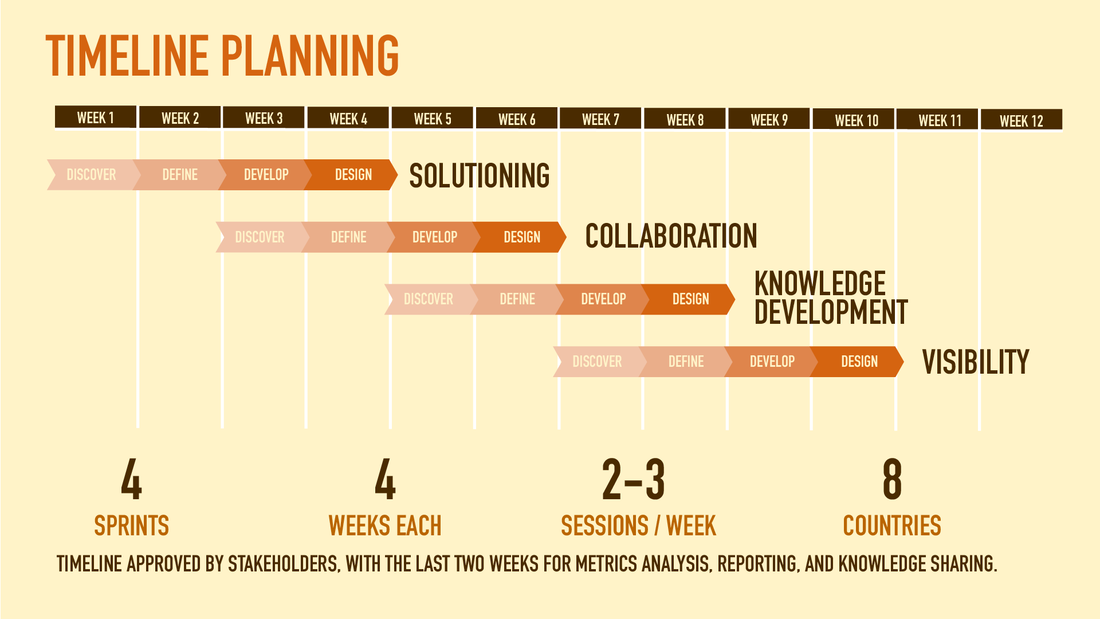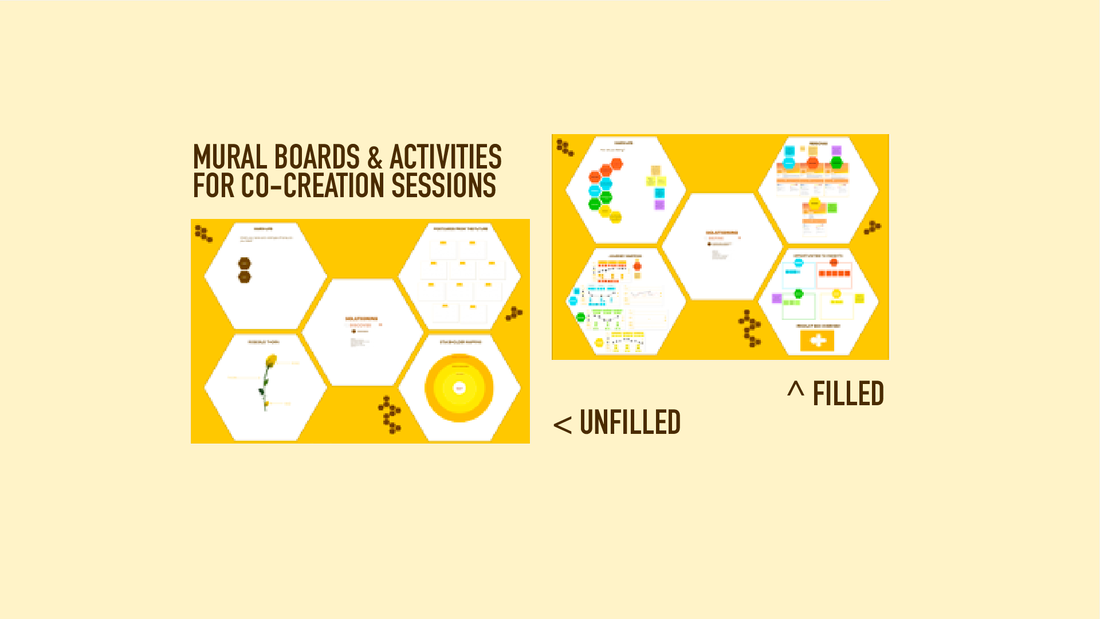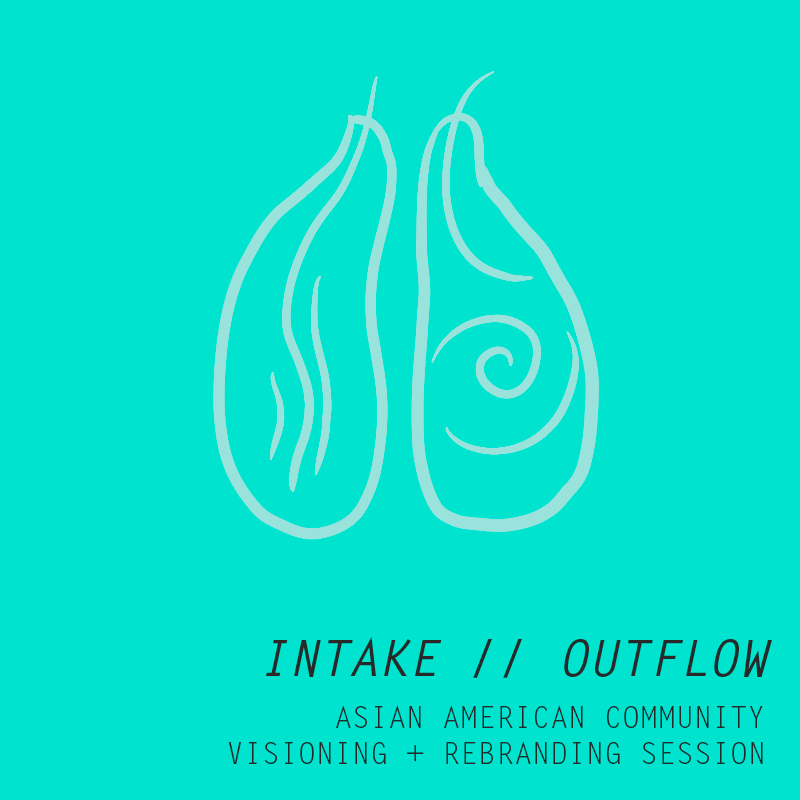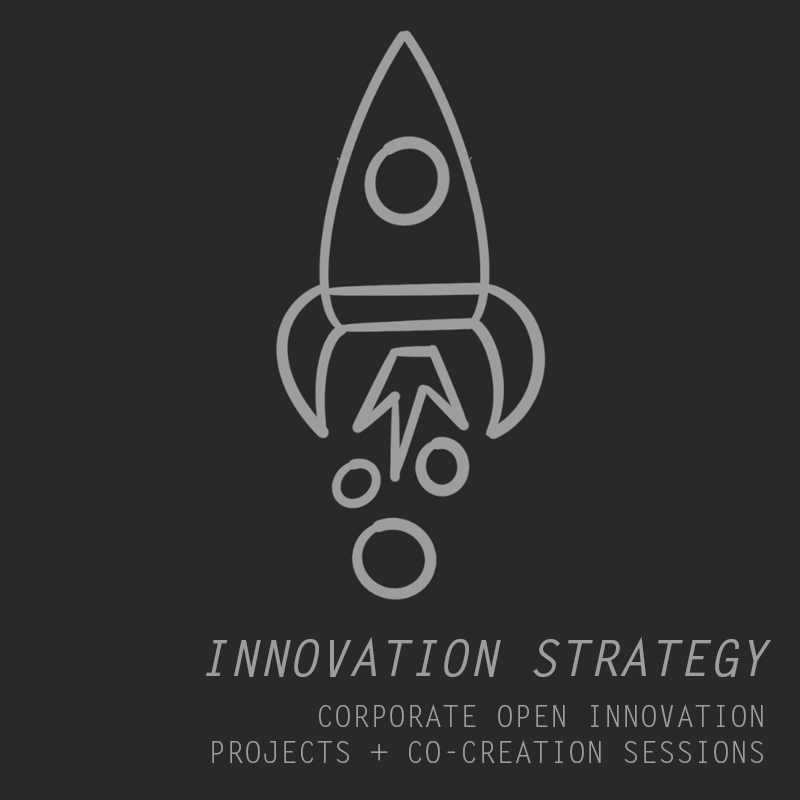hive m:nd
design and management of global innovation training program
methods: interviews, design sprints, co-creation workshops, facilitation
tags: innovation program management, socialization, curriculum design, innovation strategy, MURAL, client brief
outputs: personas, user journeys, design thinking curriculum, program metrics, roadmaps for future replication of sprints
tags: innovation program management, socialization, curriculum design, innovation strategy, MURAL, client brief
outputs: personas, user journeys, design thinking curriculum, program metrics, roadmaps for future replication of sprints
context |
As an innovation & strategy consultant with Accenture, I was given the brief:
How might we upskill an account team on innovation?
We turned this vague brief into HIVE M:ND, a train-the-trainer design sprint program to that trained a hive of innovation practitioners, or tastemakers, on design thinking so that they could infuse these practices into the rest of the account.
|
goals |
To create a training program that would teach design thinking through sprints tailored to the problems most relevant to members + co-create solutions to account problems.
|
demogaphics |
methods & deliverables |
|
7 tower leads from security, supply chain, marketing, finance, HR, IT, consumer teams
800 team members |
stakeholder interviews to design curriculum
personas & user journeys account-wide survey before & after program to measure innovation understanding + improvement |
stakeholder interviews
7 tower leads were interviewed get their main pain points that they or their teams were facing. These responses were affinity clustered into 4 main themes:
This social listening was important because it showed that though the team was very siloed, they were also facing similar problems across the different silos. These themes would then be the topics for the sprints.
- solutioning: how to come up with answers to client problems
- collaboration: how to work across tower siloes
- knowledge development: how to maintain and train on learnings gathered
- visibility: how to showcase successful work to client and throughout account
This social listening was important because it showed that though the team was very siloed, they were also facing similar problems across the different silos. These themes would then be the topics for the sprints.
curriculum design and socialization
In designing the sprints, we followed the Double Diamond process, modifying it into an infinite, iterative loop. The steps in the process, Discover, Define, Develop, and Design, became the main focus of each week in the 4-week sprints. We would be running sprint participants through design thinking activities in co-creation sessions each week.
We created some branding guidelines for the design of the materials (slide decks and MURAL boards for activities, as well as program marketing material) following the bee theme of a hive mind, tastemakers, and pollinating + crystallizing innovation.
personas & user journeys
Based on interviews, we created 3 personas involved with the program:
- Aya, the tower lead, whose motivation is to have a more innovative team and stronger relationship with the client
- Mimi, the tastemaker, whose motivation is to be the first of the cohort learning innovation and leading the way for the team
- Sam, the team member, whose motivation is to do work more efficiently and to get quickly upskilled on the new training
Because this was a new initiative, socialization was very important. Based on these different personas, we decided to conduct a socialization strategy to inform account team members about the program and pull in participants. The recruitment strategy was two-fold. In the top-down method, tower leads nominated key team members as tastemakers. In the bottom-up method, we presented at at town halls and sent out a survey to the entire team, getting potential tastemakers to sign up. The participants ended up being from 8 different countries and many workstreams.
We created user journeys to show how the different personas would interact with the programs and sprints, including recruitment and post-sprint training.
timeline
The program was also a work in progress itself, changing with input from participants each sprint. Each sprint was 4 weeks, with 2 - 3 virtual co-creation sessions each week and activities interspersed. Originally, the sessions were meant to be in-person, but because of the pandemic, we adjusted our delivery to Teams videoconferencing with sessions hosted on Mural, an online whiteboarding platform. The last two weeks were for metrics analysis, reporting, and knowledge sharing.
impact & insights
|
Because the participants varied widely from white-collar workers on strategy projects to technical data entry workers, we learned to tailor each experience to make it more relevant to the participant. For example, for the latter, we worked on more continuous improvement and identification of small process tweaks as opposed to wider and broader innovations that were too far-fetched. After all, every little bit makes an impact.
By understanding the different motivations of each persona, we quickly got buy in and created a positive impact. Many participants commended the fact that it allowed them to think differently than usual. The participants were eager to bring their learnings back to their teams and to create more sprints. Based on the before and after survey (rating knowledge of innovation), the innovation awareness of the team increased. HIVE M:ND was adopted on the account and replicated on other teams throughout the Northeast. |


